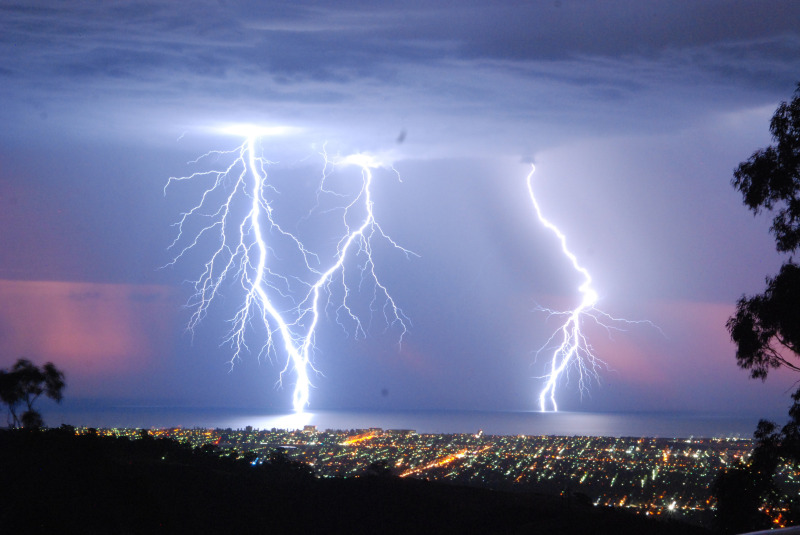
How to avoid the perfect storm of toxic smoke, rapidly spreading fires, and limited firefighting capabilities presented by lithium battery fires.
Energy storage systems have gained a lot of attention in recent years — and so have the enormous safety risks of using lithium-ion batteries. Battery energy storage systems (BESS) play a vital role in transitioning to a cleaner energy future by providing grid stability, increasing the efficiency of renewable energy sources, and reducing reliance on fossil fuels. As the use of lithium-ion batteries grows, so does the immense fear surrounding their ability to catch fire and release toxic chemicals, especially in areas with high population density.
Lithium-Ion Battery Fires and Fears
Lithium-ion batteries are notorious for containing highly flammable and toxic materials. The hazards associated with these batteries are significant as they can catch fire when they fail, releasing poisonous gases and chemicals into the air. Around 40 known fires have occurred within large-scale lithium-ion BESS as of 2021.
Thermal runaway is a common cause of fires in a BESS, occurring when a battery cell generates heat faster than it can dissipate it. This excess heat leads to a dynamic temperature increase in the cell, affecting neighboring cells and resulting in a positive feedback loop. The causes of thermal runaway can be internal defects, mechanical damage, exposure to external heat sources, overvoltage charging, or malfunction of the battery management system.
When lithium-ion batteries go into thermal runaway, they can emit deadly gases such as hydrogen fluoride and carbon monoxide for hours without catching fire. When they ignite, the smoke and chemicals released (including hydrogen cyanide and hydrogen chloride) can lead to respiratory problems for those living or working near the BESS. The heat generated by the fire can also cause structural damage to nearby buildings and homes.
Extinguishing lithium-ion fires is challenging because they burn at extremely high temperatures, and their hazardous fumes make it difficult for firefighters to approach them. But the bigger issue is that once the initial flames are extinguished, first responders must continue flooding the system with water until the remaining cells are cool enough to prevent re-ignition.
As reported by NBC News, with the number of fires caused by lithium batteries soaring across the U.S., firefighters and other experts say the training needed to fight them effectively is lagging in many places. Increasingly, the direction from fire chiefs is to let the fires burn themselves out rather than make any attempt to extinguish them, which can last for days or even weeks while emitting harmful toxins into the air.
What Happened in Warwick, NY?
Two fires involving lithium-ion batteries occurred in Warwick, NY, in early July. The first fire occurred at Convergent Energy and Power’s location on County Route 1. It started during a storm and burned for three days. The fire was near three schools, the district bus garage, and athletic fields. Officials declared a halt to all school activities, and nearby residents had to shelter in place with their windows closed.
Fire officials allowed the fire to burn out rather than try to extinguish them with water. The second incident involved fumes emitted from a storage site on Church Street Extension. Warwick Town Supervisor Michael Sweeton told News 12 Westchester that lithium-ion battery incidents should give state officials pause as there’s an apparent need to step back and evaluate the safety precautions.
Both situations have raised concerns about community safety and prompted discussions about the potential risks associated with battery storage facilities. Following the fires, first responders asserted they hadn’t received any training from the manufacturer or system operator. The public also came together and questioned whether they had received accurate information about the presence of the facilities and the associated dangers.
What Could Go Wrong?
The convergence of flammable battery technology, inadequate first responder training, and a perplexing choice of location had the potential for a catastrophic disaster. Fortunately, due to the timing of the Warwick incident and the absence of students, no injuries were reported. Contemplating what could have transpired had the fire occurred just a month prior — when school was still in session — evokes a chilling realization of how drastically different the outcome could have been.
Consider the possibilities in a downtown area. As a lithium-ion battery fire rages, the smoke and fumes released into the air pose a significant health risk to the surrounding population. The intense heat generated by lithium-ion blazes could cause nearby structures to catch fire, leading to a cascade of secondary fires and increased property damage. Winds could fuel the spread of the flames, making it challenging for firefighters to contain the intensity and protect surrounding buildings. The perfect storm of toxic smoke, rapidly spreading fires, and limited firefighting capabilities would create a volatile and potentially devastating situation for the area affected by the battery fire.
New Technologies
Researchers are creating innovative battery chemistries with safety and reliability in mind, to better suit the conditions of densely populated areas. To eliminate the risk of thermal runaway, a non-flammable electrolyte is essential. In addition, by focusing on non-toxic batteries with a longer lifespan, a more durable and sustainable option becomes available.
Manufacturers are creating alternative batteries that can last for decades with minimal maintenance and replacement, which maximizes the return on investment. Innovators also consider the demand for high energy density and vast temperature range operation, ensuring the new battery chemistries are suitable for various applications and environments.
When planning storage installations in urbanized areas, it’s vital to use battery chemistries that aren’t combustible and won’t damage the environment to ensure safety plus avoid potential hazards. Adopting such solutions can lower the risk of fires and other concerns while providing the benefits of dependable and affordable energy storage. The time has come to break the myth that alternatives aren’t ready. The technology is available, and it’s up to industry leaders to switch to safer battery chemistries before more events like Warwick occur.




